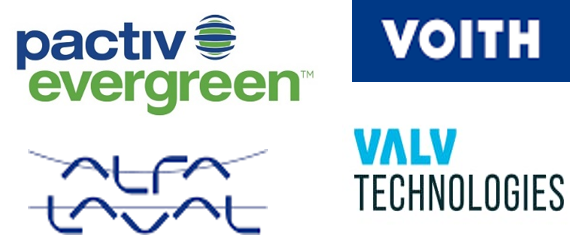Market Overview:
"The global autonomous tractor market was valued at US$ 2.7 billion in 2024 and is expected to register a CAGR of 22.3% over the forecast period and reach US$ 16.5 billion in 2033."
|
Report Attributes |
Details |
|
Base Year |
2024 |
|
Forecast Years |
2025-2033 |
|
Historical Years |
2021-2023 |
|
Autonomous Tractor Market Growth Rate (2025-2033) |
22.3% |
Autonomous tractors, equipped with advanced sensors and Artificial intelligence (AI) technology, autonomously perform farming tasks such as plowing, planting, and harvesting. These tractors aid in addressing labor shortages, enhancing operational efficiency, and optimizing resource utilization. These are used in large-scale agriculture, enabling precise and consistent farming operations. Rising demand for autonomous tractor is driven by need for increased productivity, reduced operational costs, enhanced crop yield, and ability to work around the clock, transforming older farming practices and ushering in a new era of smart agriculture.
The global autonomous tractor market is registering steady revenue growth driven by high demand for precision farming and automation. Farmers seek efficient field operations and reduced labor dependency. Advancements such as AI-driven decision-making, precision navigation, and integration with farm management systems and government initiatives to modernize agriculture are expected to further drive market revenue growth. While regulatory compliance and technological challenges exist, analysis reveals a progressive shift towards autonomous farming for sustainable and efficient agriculture.
Autonomous Tractor Market Trends and Drivers:
Labor Shortages: Declining agricultural workforce is resulting in need for autonomous tractors to efficiently manage farming tasks, and this is expected to drive market revenue growth.
Precision Farming: Autonomous tractors enable precise planting, fertilization, and harvesting, leading to increased crop yields and resource optimization. Rising awareness regarding these benefits of autonomous tractors is expected to support adoption of these tractors, and in turn, drive revenue growth of the global market.
Operational Efficiency: These tractors work continuously without breaks, accelerating farming processes and improving productivity. Need for operational efficiency is expected to drive demand for these tractors among farmers.
Cost Reduction: Lower labor and operational costs are achieved through reduced human intervention and optimized field operations.
Technology Advancements: Rapid progress in AI, sensors, and connectivity enhances the capabilities of autonomous tractors, attracting farmer preference.
Autonomous Tractor Market Restraining Factors:
Technological Complexity: The intricate nature of autonomous tractor technology can lead to challenges in development, integration, and maintenance, potentially lowering product adoption.
High Initial Costs: Upfront investment required for autonomous tractors, including advanced sensors and AI systems, can be a barrier for small and medium-scale farmers, thereby hampering market revenue growth.
Data Privacy Concerns: The collection and sharing of sensitive agricultural data for autonomous operations raise concerns about data security and privacy.
Regulatory Hurdles: Varying regulations and lack of standardized guidelines for autonomous farming equipment hamper widespread adoption across various regions.
Skills Gap: Farmers require training to operate and manage autonomous tractors effectively, highlighting the need for proper skill development. Lack of skilled farmers could lead to low adoption of autonomous tractors and restrain market revenue growth.
Autonomous Tractor Market Opportunities:
Precision Agriculture Services: Offering specialized services such as field mapping, soil analysis, and data-driven insights is creating revenue streams through subscription models.
Aftermarket Upgrades: Providing software updates and hardware enhancements for existing autonomous tractors ensures recurring revenue streams for global players.
Collaborative Farming: Creating platforms that enable farmers to share autonomous tractors or services drives collaboration and generates additional income for companies offering such platforms.
Rental and Leasing: Offering autonomous tractors on a rental or lease basis provides access to advanced technology without the burden of high upfront costs.
Data Monetization: Aggregating and anonymizing farming data collected by autonomous tractors can be sold to agribusinesses for research and analysis.
Integration Solutions: Developing compatible software and hardware solutions to integrate autonomous tractors with existing farm machinery generates revenue for market players.
Training and Support: Providing training programs and technical support for farmers transitioning to autonomous technology ensures a steady revenue stream.
Customization Services: Offering tailored autonomous tractor solutions for specific crops or farming practices can command premium prices.
Remote Monitoring Services: Offering remote monitoring and control services for autonomous tractors adds value and this can generate subscription-based revenue.
Autonomous Tractor Market Segmentation:
By Product Type:
- Hardware Components
- Sensors (LiDAR, Radar, Cameras)
- GPS Receivers
- Control Units
- Communication Modules
- Software Solutions
- Navigation and Path Planning
- Artificial Intelligence Algorithms
- Data Analytics and Integration
- Remote Monitoring and Control
By Power Source:
- Diesel Autonomous Tractors
- Electric Autonomous Tractors
By Crop Type:
- Cereals & Grains
- Oilseeds & Pulses
- Fruits & Vegetables
By Automation Level:
- Partial Automation
- High-level Automation
By Application:
- Plowing and Cultivation
- Seeding and Planting
- Harvesting
- Spraying and Fertilizing
- Others
Autonomous Tractor Market, By Region:
- North America
- Latin America
- Europe
- Asia Pacific
- Middle East & Africa
The US is the largest market in North America autonomous tractor market due to vast agricultural landscape, substantial adoption of advanced farming technology, strong presence of agribusinesses, and robust research and development efforts in the country. These factors create a favorable environment for adoption and integration of autonomous tractors in modern farming practices.
Key trends driving autonomous tractor sales in Europe include shift toward sustainable agriculture, adoption of precision farming techniques, government support for technological advancements, emphasis on data-driven decision-making, and collaborations between agricultural and technology sectors to enhance efficiency and address labor challenges in the farming industry.
Investment in China and India is pivotal for revenue growth of the Asia Pacific autonomous tractor market due to significant agricultural sectors, increasing need for advanced farming solutions, rising demand for crop yield optimization, and government initiatives supporting agricultural modernization. These factors make these countries key revenue contributors in the region.
Leading Companies in Autonomous Tractor Market & Competitive Landscape:
The global autonomous tractor market features a competitive landscape marked by established players such as John Deere, CNH Industrial, AGCO Corporation, and Kubota Corporation. These manufacturers lead in technological innovation and product development. New entrants and startups such as Autonomous Tractor Corporation and PrecisionHawk are enhancing market diversity. Collaborations with technology companies and agritech startups are driving research and development. High focus on precision agriculture, data analytics, and sustainable farming solutions amplifies the competition, while partnerships, mergers, and acquisitions contribute to determining the evolving competition in the market.
Company List:
- John Deere
- CNH Industrial
- AGCO Corporation
- Kubota Corporation
- Autonomous Tractor Corporation
- PrecisionHawk
- Yanmar Co., Ltd.
- Escorts Limited
- Yanmar Co., Ltd.
- Mahindra & Mahindra Ltd.
- Raven Industries
- Trimble Inc.
- Fendt (a brand of AGCO Corporation)
Autonomous Tractor Market Research Scope
|
Report Metric |
Report Details |
|
Autonomous Tractor Market size available for the years |
2021-2033 |
|
Base Year |
2024 |
|
Forecast Period |
2025-2033 |
|
Compound Annual Growth Rate (CAGR) |
22.3% |
|
Segment covered |
Product Type, Power Source, Crop Type, Automation Level, Application, and Region |
|
Regions Covered |
North America: The U.S. & Canada Europe: Germany, The U.K., France, Spain, Italy, Russia, Poland, BENELUX, NORDIC, & Rest of Europe Asia Pacific: China, India, Japan, Australia & New Zealand, ASEAN, & Rest of Asia Pacific Latin America: Brazil, Mexico, Argentina, & Rest of Latin America The Middle East & Africa: Saudi Arabia, United Arab Emirates, South Africa, Egypt, Israel, and Rest of MEA |
|
Fastest Growing Country in Europe |
Germany |
|
Largest Market |
North America |
|
Key Players |
John Deere, CNH Industrial, AGCO Corporation, Kubota Corporation, Autonomous Tractor Corporation, PrecisionHawk, Yanmar Co., Ltd., Escorts Limited, Mahindra & Mahindra Ltd., Raven Industries, Trimble Inc., and Fendt. |
Frequently Asked Question
What are the key factors driving revenue growth of the global autonomous tractor market?
Revenue growth of the global autonomous tractor market is primarily driven by factors such as need for increased agricultural productivity, labor shortages, adoption of precision farming techniques, and advancements in autonomous technology.
Which regions/countries register significantly high demand in the global autonomous tractor market?
Regions that register high demand in the global autonomous tractor market include North America, Europe, and Asia Pacific. Countries with strong agricultural sectors, including the United States, Germany, and China, contribute significantly to product demand.
What are the key challenges faced by companies in the global autonomous tractor market?
Companies in the global autonomous tractor market face challenges such as technological complexities in developing robust autonomous systems, addressing data privacy and security concerns, managing regulatory variations across different regions, and ensuring seamless integration with existing farming practices.
What are the emerging trends observed in the global autonomous tractor market?
Emerging trends in the global autonomous tractor market include integration of advanced sensors for precise navigation, use of artificial intelligence algorithms to optimize field operations, expansion of partial and high-level automation options, customization of solutions for specific crops, and the exploration of subscription-based services.
How are government initiatives supporting revenue growth of the global autonomous tractor market?
Governments are introducing initiatives that encourage adoption of advanced farming technologies such as autonomous tractors. These initiatives include subsidies, grants, and incentives to promote technological innovation in agriculture, thereby supporting modernization in the farming sector and market revenue growth.

